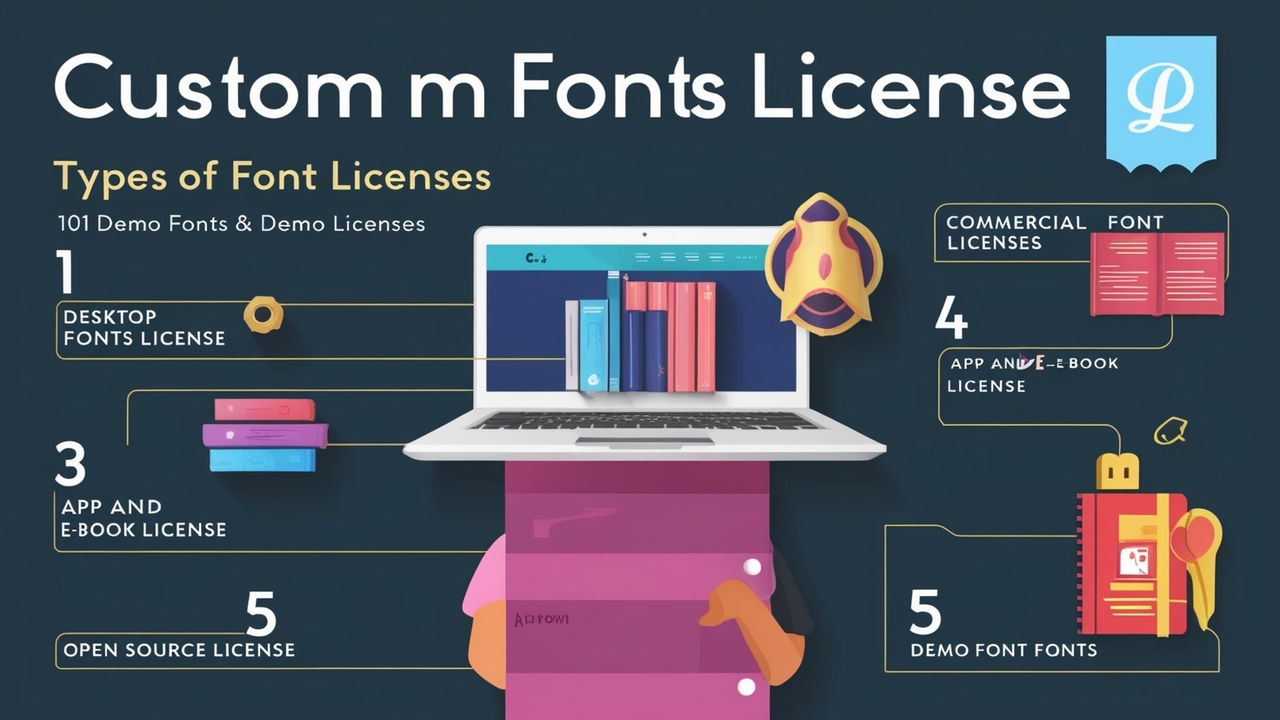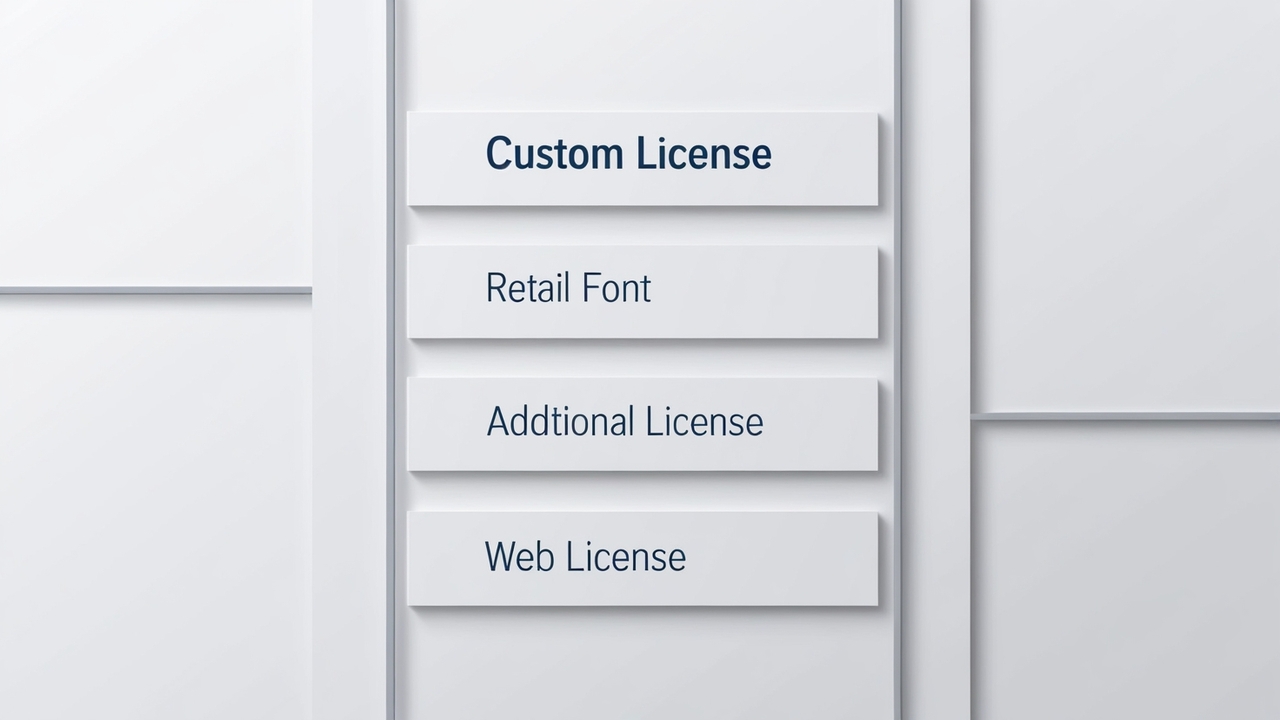In today’s digital age, choosing the right font can significantly impact your brand or project. Custom fonts are becoming increasingly popular, allowing businesses and designers to stand out using unique typography conveying a distinct message.
However, it is essential to understand custom fonts and licensing to avoid legal complications when using or distributing fonts. Here, we’ll dive into custom fonts, font licensing, the different types of licenses, and how to stay compliant.

Custom Fonts & Licensing 101

Designers create custom fonts specifically tailored to meet the unique needs of particular brands, products, or individuals. However, when using or distributing any custom font, it is crucial to understand the custom font license that governs its use. Font licensing protects the intellectual property rights of font creators and type designers.
Licensing varies depending on how you intend to use the font—whether it’s for print, web, app development, or other media. Each license agreement defines the scope of use, from personal projects to large-scale commercial ventures.
Types Of Font Licenses
Various types of font licenses exist to accommodate different usage scenarios:
1. Desktop Fonts License
A desktop font license allows users to install a font on their computers, enabling them to design print materials like brochures, flyers, and posters. The licence typically restricts how many computers can use the font and may involve additional fees if used across multiple devices.
2. Webfont License
Webfonts require a webfont license if you plan to embed fonts on a website. Often, the cost of this license depends on the number of views the website receives. Tools like Google Fonts offer a library of web fonts with free and paid fonts under different licensing terms.
3. App and E-Book License
4. Commercial License
A commercial license permits using a font in profit-generating projects such as advertising campaigns, product packaging, or merchandise. Commercial usage requires careful scrutiny of the commercial font license to ensure it covers all intended use cases.
5. Open Source Font License
Many free fonts, such as the SIL Open Font License (OFL), are available under open-source licenses. These fonts can be freely used, modified, and distributed as long as the conditions set by the license are met. Be sure to check whether you need an additional license for commercial use, especially when using fonts from platforms like Google Fonts or Font Library.
6. Demo Fonts and Demo Licenses
Some types of foundries offer demo fonts under a demo license, which allows designers to test the font before purchasing. However, these are typically limited to non-commercial usage and have specific restrictions.
Key Licensing Terms And Conditions

When working with fonts, it is essential to know a few important terms to ensure you’re complying with licensing requirements:
- Custom License: If you commission a type designer to create a custom font, the designer will issue a custom license that grants specific rights and restrictions.
- Retail Font: These fonts are sold directly by font marketplaces or foundries. They come with a font licence that outlines their permitted usage.
- Additional License: In some cases, an existing font might require an additional license for extended use, such as expanding usage to a larger number of devices or users.
- Web License: A web license is required to allow the use of web fonts across various online platforms when embedding them in websites.
Managing Font Files And Compliance
When using a font, you work with a font file (such as . TTF or . OTF formats), which must be installed on your device or server. Whether using desktop fonts or web fonts, always ensure that you have the proper license agreement in place. Font foundries often specify how many users or devices are allowed per license, so ensure you are compliant by maintaining records of all your font licenses.
Platforms like Adobe Fonts and Google Fonts offer vast libraries of free fonts and commercial fonts with flexible licensing options, making it easier for designers to find specific fonts that meet their project requirements.
Conclusion
Selecting and using custom fonts can be exciting, but it also comes with legal responsibilities. Understanding the different types of font licenses—whether for variable fonts, custom fonts, or free fonts is essential for staying legally compliant. Whether you’re using a licensed font from a font foundry or embedding an open-source font in your web design, having the appropriate license ensures that your creative work is legally sound and visually distinctive.
FAQs
1.Do I Need A License For Free Fonts?
Yes, even free fonts often come with a license that restricts how they can be used, especially in commercial projects.
2.Can I Modify A Font?
It depends on the license. Some fonts, like those under the SIL Open Font License, allow modifications, while others do not.
3.What Happens If I Use An Unlicensed Font?
You may face legal action, including fines or lawsuits from the font creator or foundry.
4.What Is A Demo License?
A demo license allows you to use a font in non-commercial projects or client presentations but not for final products.
5.Where Can I Find High-Quality Free Fonts?
Google Fonts is a great resource for open-source, high-quality fonts available for both personal and commercial use.


Leave a Comment